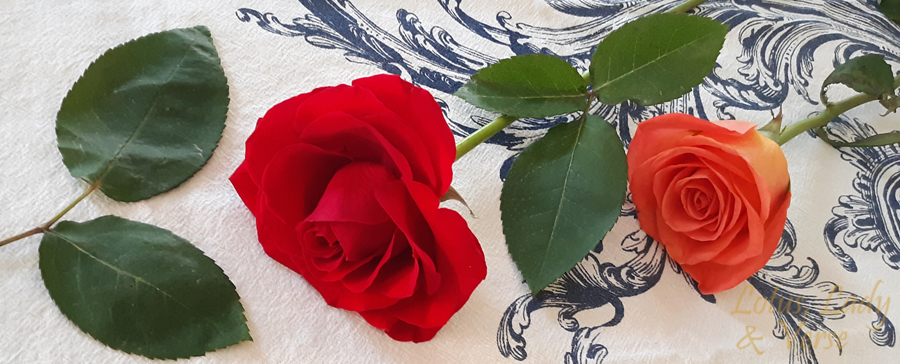
True Stories about the Rose
Roses around the world are recognizable. Their silky petals open to reveal a center full of stamens. Their thorns and slightly leathery green leaves protect the blooms, which are generally profuse. Especially if the rose is wild, or allowed to freely branch or twine as in the dog or climbing roses, you can count the petals, on one hand–one for each finger. Garden roses differ from species roses; many have been created by the growers for certain effect.
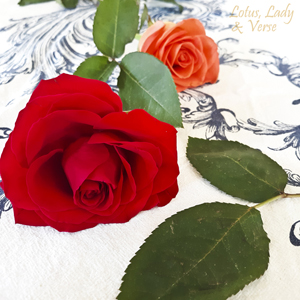
Sources differ as to the number of roses in existance—or should I say that the writers make differing claims on what we know about the rose.
According to Jennifer Rhind, there are 150 different species, or kinds, of rose. A particular one has the botanical name Rosa gallica. So, Rhind cites the Gallica, or apothecary rose as the most ancient, the oldest progenitor of species roses such as Rosa damascena and Rosa centifolia. These three are the triad of species that perfumers use to make the scents we clamor for.
To drink in the scent of a rose, pick the bloom before the sun’s morning rays fall on them. Know also that the roses we see in commerce, or grow in gardens are hybrid. So, ask any rosarian or rose-breeder, for a strong-smelling rose if you want to cultivate them for teas or food! Yes, rose petal tea, jam, or honey are delicious ways to imbibe the rose.
Roses are considered an herb in Traditional Chinese Medicine. Although not the only ancient culture to ascribe such benefits, Roses are known in China as a calming herb and edible flower. Rosa rugosa, also called Japanese Rose, has the name Mei Gui Hua in Chinese medicine. Mei Gui Hua/the seaside/Japanese Rose helps calm irritations, especially of the body’s circulation.
“Roses regulate the body’s energy and reduce stagnation (congestion).”
—Michael Tierra, on the herb Rosa rugosa, p. 140 “Chinese Traditional Herbal Medicine”, Vol. 2
“Roses have anti-hypertensive, anti-diabetic, anti-anxiety, hypnotic, anti-inflammatory, nerve-calming, and mood-boosting effect… mostly from the essential oils (or extracts) of the roses.”
—Maria Noel-Groves, on Rosa species, p. 158, in “Body into Balance”
According to Western herbalists, Rose is antidote to heat and inflammation, a classification probably handed down from Greek medicine.
“Rose acts on heat in the digestive tract, including diarrhea, dysentery and stubborn inflammatory conditions.”
—Matthew Wood, on Rosa canina, p.422 in “The Earthwise Herbal, Volume 1”.
For Western herbalists, and indeed herbalists all over the world, heat occurs with an imbalance of energies. But how that imbalance is explained is what differentiates Chinese traditional medicine from Ayurveda, each system having its own perspective on how ill-health is caused. To return to health, many of these traditions point to food and drink as the source as the well-spring of benefits, not immediately to medicine, unless as a last resort.
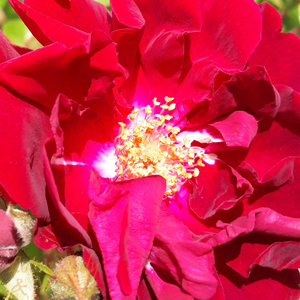 Roses are traditional in Ayurvedic medicine as well. A blend of two sacred scents, Rose and Sandalwood essential oils, yields a “traditional attar”, says author Jennifer Peace Rhind.
Roses are traditional in Ayurvedic medicine as well. A blend of two sacred scents, Rose and Sandalwood essential oils, yields a “traditional attar”, says author Jennifer Peace Rhind.
“The rose flower symbolizes perfection”…
—Jennifer Peace Rhind, p. 300 on Roses, in “Fragrance and Wellbeing”.
Here, Rhind’s allusion completes the circle of the rose, which begins with love and adoration and contains earthly or physical purity as well. We see the queen of flowers, the rose, as a supreme experience.
“The lotus of the heart is a rose.”
—David Frawley and Vasant Lad, on Rose Flowers, page 141, “The Yoga of Herbs”.
They say Roses are flowers that increase adoration and reverence. This devotional aspect resides in the beholder in prayer, while the rose also nourishes physically. What more complete a flower do we know?
Frawley and Lad also say Ayurvedic practitioners use rose petals to balance circulatory, nervous system and female reproductive imbalances and pain. Roses tea can be used as an eyewash, and Roses tea is beneficial to the nerves and to mature and compromised skin.
The authors add that rose combines well with other flowers to amplify its effects on the circulatory system. Especially for women, roses and safflower, or roses and hibiscus are tonic to the reproductive system.
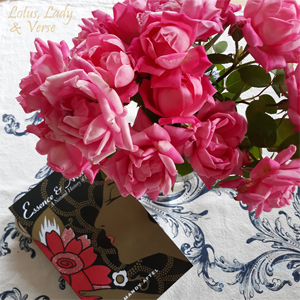
Roses’ aromas defy description, although perfumers have colored our view of scent by assigning certain labels to the scent of rose. For the scent-maker’s allure comes from our desire to be clothed in that fragrance of love.
Imagine jasmine as companion to the rose, sending a message of love. Even a lowly companion plant, not as well-known, but a powerfully medicinal herb with flowers together with the Rose, would make an effusive aroma.
Mandy Aftel says “Rose is the ultimate heart note…” meaning the melody of a perfume with three basic notes—base, heart and high—the heart is concealed in rose. She says the scent of roses embrace the aromas of other flowers “with full-bodied, unthreatening beauty.” (p. 110)
Rose otto, an essential oil of rose is really expensive, out of reach for casual use. Yet versions of rose aromas, called absolutes or concretes are less costly and more available.
You’ll find labels on bottled Rose absolute that indicate Bulgarian, Turkish, Indian, Morrocan, or Egyptian origin. These names indicate the places where the species Damascena (Damask), or Centifolia, reserved for perfumes, are grown.
“The Arabs loved roses even more than we do.”
—Mandy Aftel, on Roses, p. 99, in “Essence & Alchemy”.
Yet, the fabled place of roses in gardens is Persia. Roses, excellent companions to the poet Saadi, as he leaned into solitude and wrote “The Rose Garden” in the 13th century.
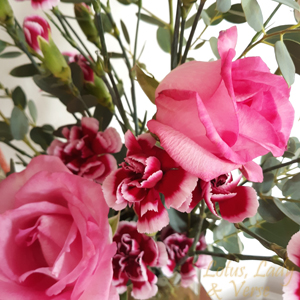
On Rose petals and Hibiscus flowers together in a tea: “Sweet rose petals balance the sour taste of Hibiscus and add a delicious aroma…”
—Juliet Blankenship, about Petal Tea, p. 149, in “Wild Beauty”.
Rose Petal Jam is a product you can purchase. Why not make your own version? Doctor of Oriental Medicine and Herbalist Michael Tierra says to chop the clean and patted dry petals finely, cover with honey and allow to macerate or soak overnight before use as a sweetener, or spreading on toast.
“Dried Rose petals retain their scent…”
“… rose essential oil is valued by aromatherapists for its rejuvenatiing qualities.”
—Lesley Bremness, p. 121, in “Herbs”
In fact, a potpourri of rose petals still smells heavenly 18 years later!
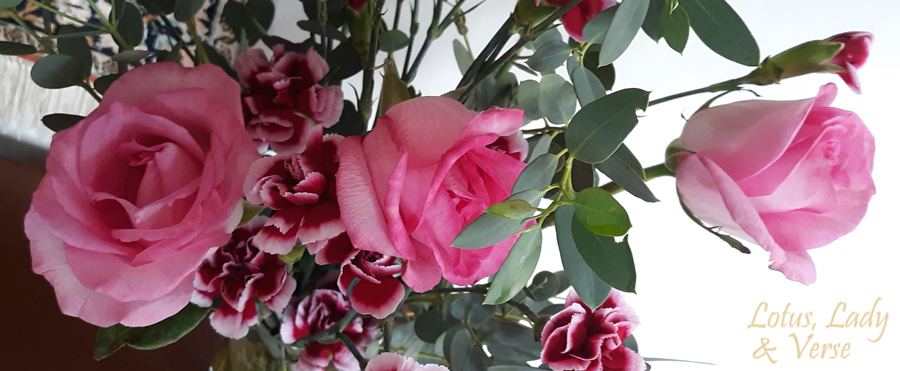 Roses are classed as perfume, medicine, or tea, and food. At first, I wonder, just four? Then what about the reference to adoration of the gods in Frawley and Lad’s “Yoga of Herbs”? As Roses take their place in so many aspects of our experience, they pose as a bridge to heaven, too.
Roses are classed as perfume, medicine, or tea, and food. At first, I wonder, just four? Then what about the reference to adoration of the gods in Frawley and Lad’s “Yoga of Herbs”? As Roses take their place in so many aspects of our experience, they pose as a bridge to heaven, too.
Breathe deeply the perfume of a rose. Savor the bloom which, picked close to dawn, is holding its precious scent for you!
Follow


